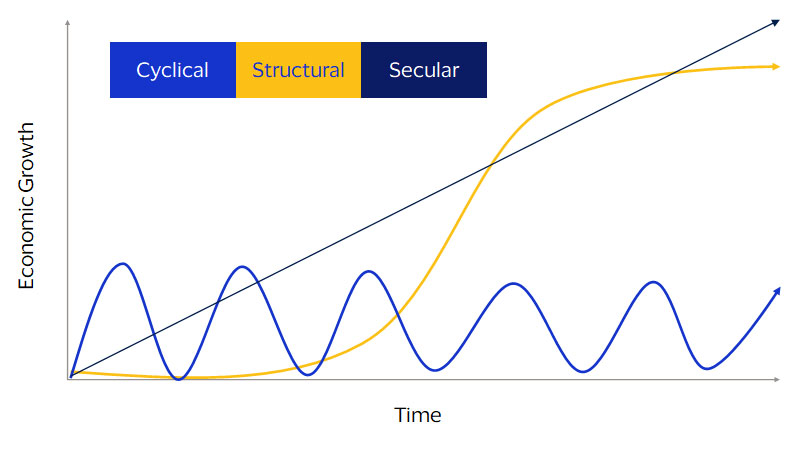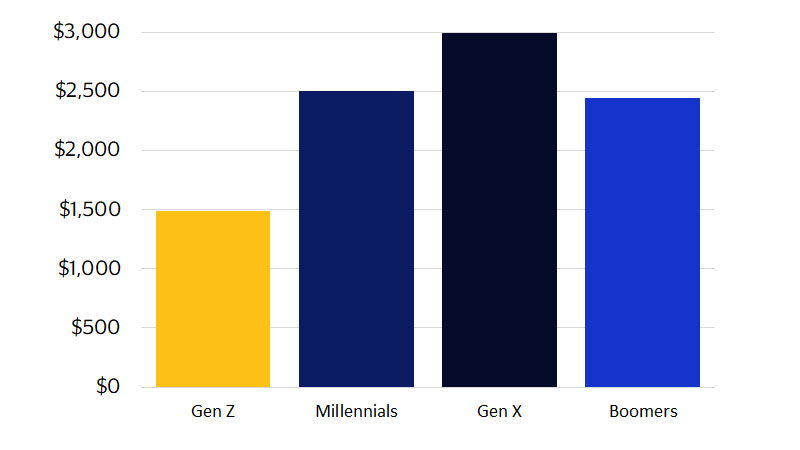At first glance, by sheer numbers alone Gen Z does not appear to be a catalyst for secular change. Millennials were by far a bigger generation when they came of age in 2012. Gen Z will reach a population of around 1.7 billion by the time all Gen Zs are fully in the labor force (aged 15+), behind millennials and on par with Gen X (Figure 2*).
But looking at just the size of each generation might miss the point and paint an incomplete picture. The baby boomer generation, as an example, is the smallest, but when boomers came of age they represented over one out of every two adults in the world – and consequently played a much larger role in driving change. In comparison, Gen Z will be the smallest generation as a share of the total adult population in 2026, at around one in three adults.
Beyond just the numbers, Gen Z adds something critical to the world’s demographic mix – it is the only generation that is largely considered digitally native. Gen Z consumers grew up in a world where the internet was always there and smartphones were ubiquitous as the means of communication, work, commerce, entertainment, among others. These consumers grew up with the app economy, the spread of 4G technology and the ‘always connected’ mindset. By 2026, when Gen Z fully matures, nearly 60 percent of the global adult population will have been born in a world where the internet was an essential, constant feature of daily life (Figure 3*).
While it is still unclear how Gen Z and the emerging technologies will transform the economies and marketplaces of tomorrow, a look back at previous transformative generations provides guidance. Baby boomers, after all, came to define capitalism, consumer trends and payment technologies in the latter half of the last century. We could potentially see yet another round of defining changes that affect those areas with Gen Z.



